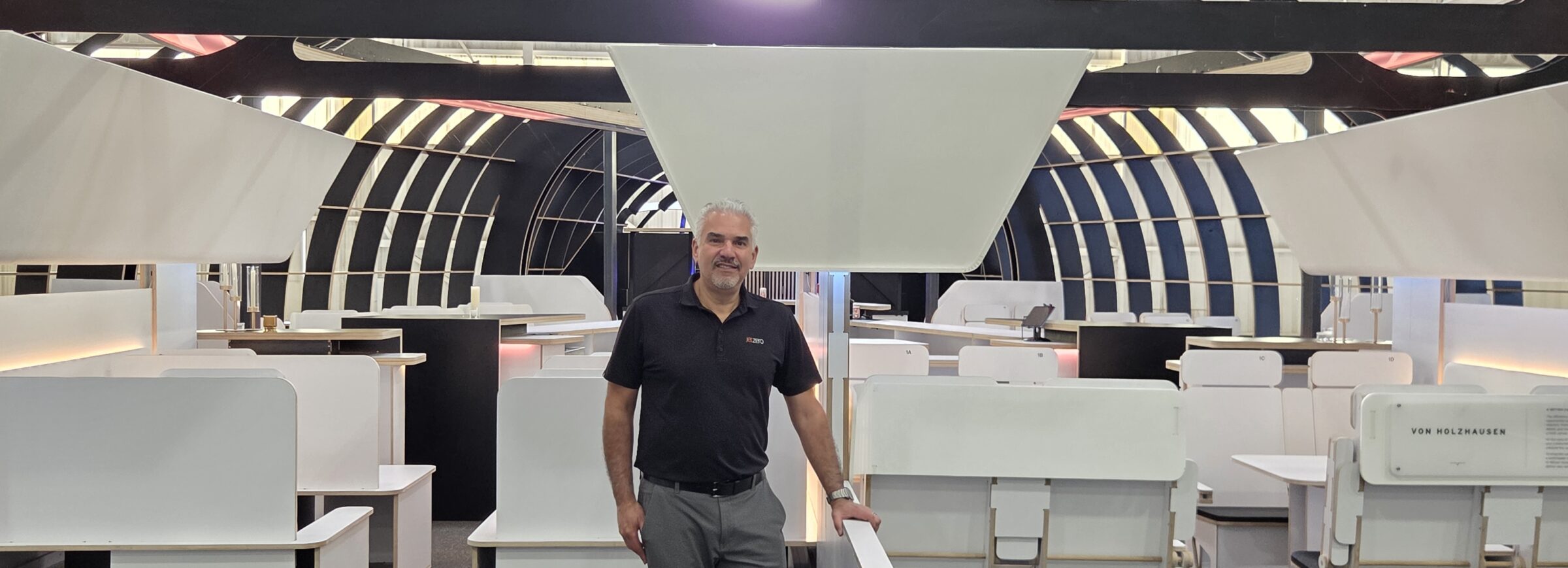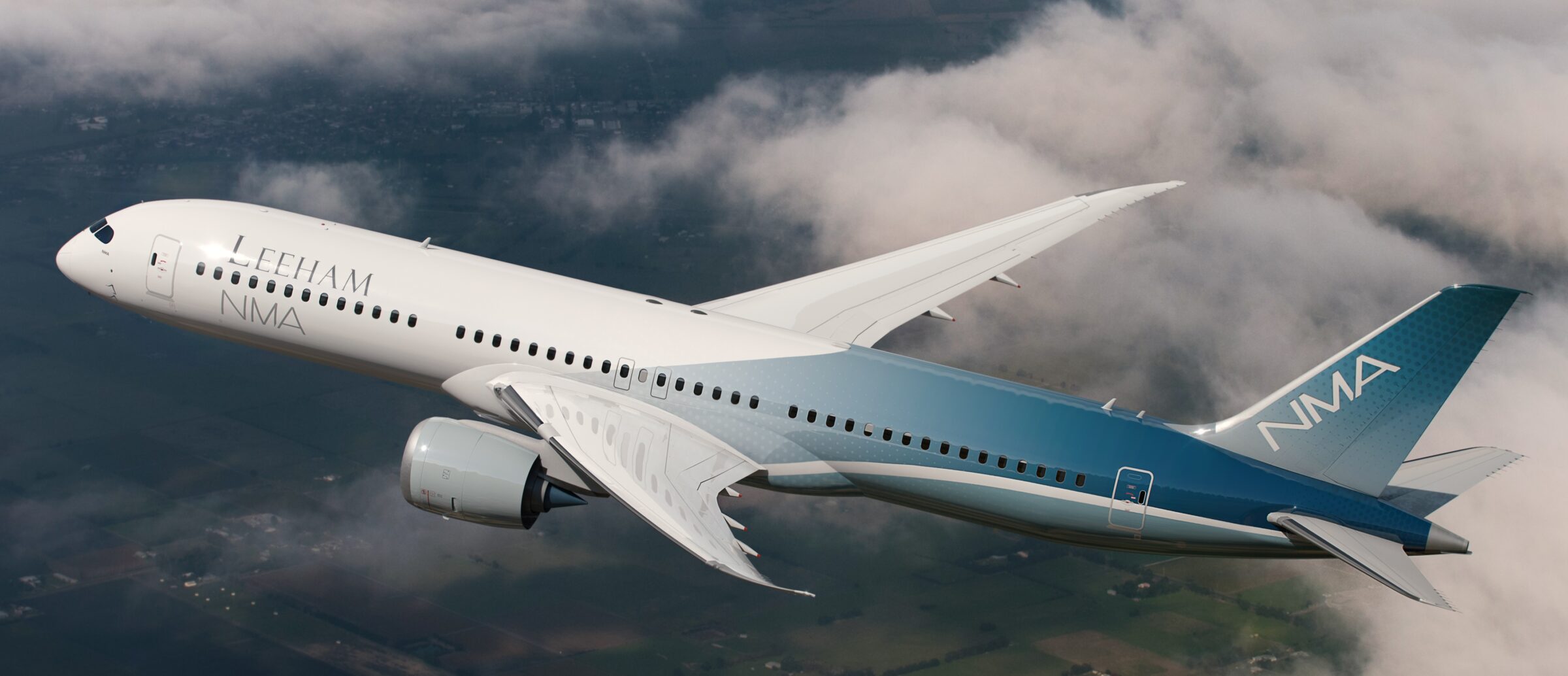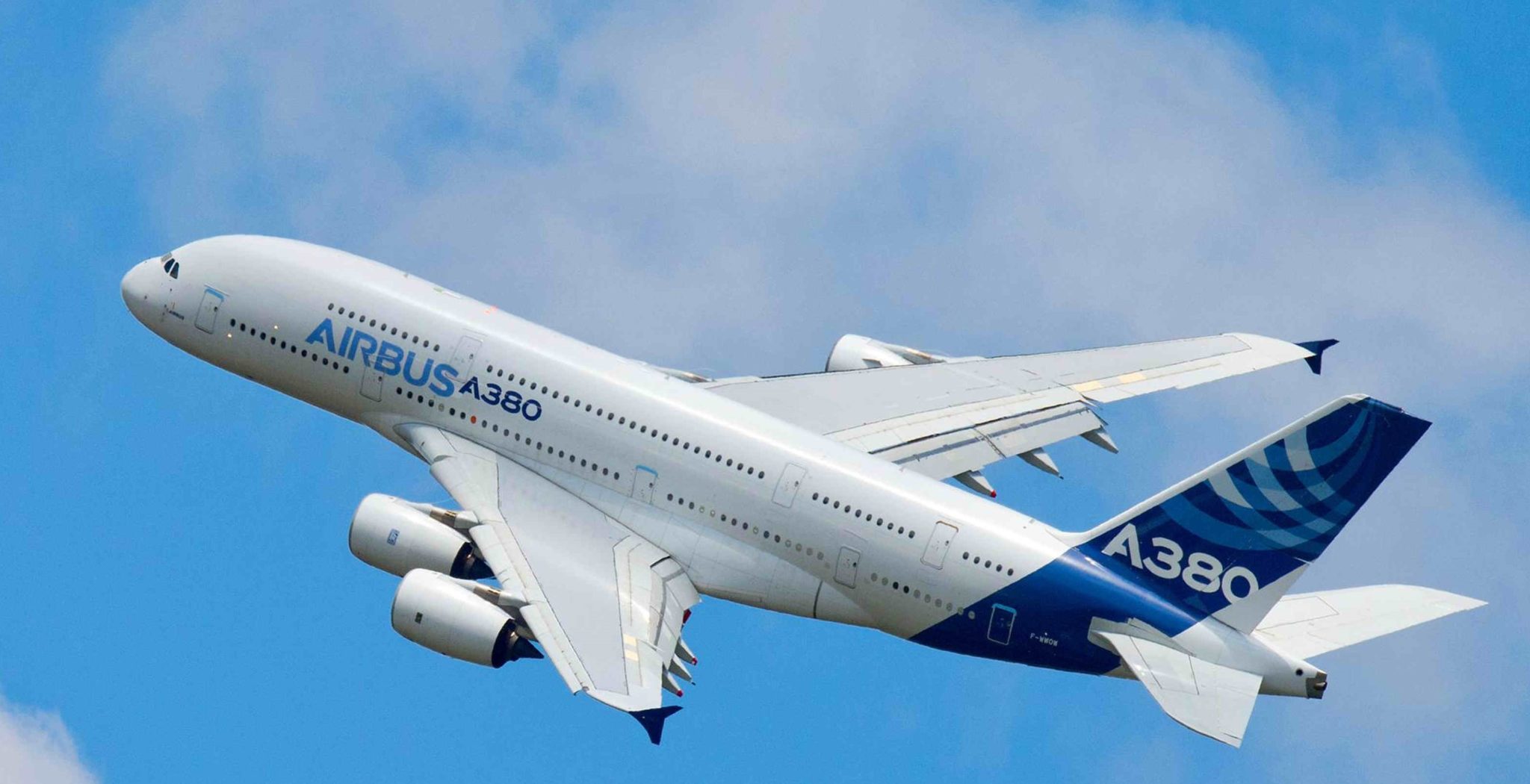Leeham News and Analysis
There's more to real news than a news release.
JetZero readies effort for private equity fund raising
Subscription Required
By Scott Hamilton
May 5, 2025, © Leeham News: JetZero, the start-up company developing commercial aviation’s first passenger Blended Wing Body (BWB) airplane, is gearing up to seek private equity funding for billions of dollars needed to bring its aircraft to market.

JetZero president and COO Dan da Silva demonstrates the human scale of the Z4 Blended Wing Body mock-up at the company’s Long Beach (CA) facility. Credit: Leeham News.
In a media day on Friday, executives and staff briefed reporters on progress to date, production work on the first full-size demonstrator aircraft, technical details and studies continuing an production plans.
Officials expect to announce a site selection for its final assembly plant in the coming weeks, before the Paris Air Show that begins in mid-June.
JetZero’s airliner is dubbed the Z4. It’s nominally a 250-passenger, 5,000nm design for the so-called Middle of the Market currently occupied by out-of-production and aging Boeing 767-300ERs, Airbus A330-200s and a limited number of Boeing 757s. Entry-into-service is targeted for the “early 2030s.” The first flight of the demonstrator aircraft is planned for 2027.
JetZero has an ambitious goal for producing the composite aircraft. The final assembly site, for which the company has down-selected the finalists, will be on a 1,000 acre site with a building about the size of Boeing’s widebody plant in Everett (WA). Boeing’s Everett site is somewhat larger than 1,000 acres.
JetZero is planning for a monthly production rate of 20 five years after production begins. The company has hundreds of conditional orders from major airlines.
Daunting tasks remain in the coming years. Among them: there is currently no engine commitment for the airplane; a product support system is needed; finalizing the method to product the composite airplane; “flying” the iron bird; and much more.
The Economics of the 767 and A330 at Seven and Eight abreast
Subscription Required
By Bjorn Fehrm
Introduction
Dec. 8, 2022, © Leeham News: In a previous article, we started speculating what an NMA type of aircraft would look like based on a Boeing 767 cross-section. An airliner’s cross-section decides the design of a large number of parts in an airplane.
In essence, a fuselage is a tube with a constant cross-section where the constant parts are repeated framewise to form the fuselage. It’s finished with a tapering forward cockpit and a rear tapering empennage.
We now look at what could have been a passenger version of an NMA that would have used the Boeing 767 cross-section with adaptations. To understand its economic impact, we make a comparison where we take a standard 767-300ER, then modify it to an NMA type fuselage and compare it to the competition in the size class, the A330-200 and -800.
As before, we do this by flying the world’s busiest long-haul route, London Heathrow, to New York JFK.
Summary
- An NMA based on an improved 767 fuselage cross-section would have been a very competitive airliner
- I would be the ideal replacement for the Boeing 757, 767, and 787-8.
With Boeing’s decision against new airplanes, Airbus will stand down, too
Subscription Required
By Scott Hamilton
Nov. 14, 2022, © Leeham News: Boeing’s decision to suspend the launch of any new airplane until the middle of the next decade means innovation of any kind from any company is largely dead for the next decade.
Airbus won’t launch a new airplane either, now that Boeing has stood down, says its former chief strategic officer, Kiran Rao. Rao is now an advisor to airlines and lessors. He had been with Airbus for 25 years in sales and product strategy.
While Boeing’s decision to suspend new airplane development casts a dark cloud over its strategic future, Airbus now is going to rest on its own status quo, Rao said.
Summary
- Airbus engineers will atrophy.
- Boeing was “one step away from checkmate” against Airbus in 2005-2006 and made a big mistake not taking up the opportunity.
- GE and Safran don’t want to innovate. Pratt & Whitney can’t do much beyond today.
- Boeing should have launched the NMA. It would have beaten the A321XLR.
- The NMA would have created a new market.
Why the A380 didn’t sell
Subscription Required
By Bjorn Fehrm
Introduction
November 25, 2021, © Leeham News: The last A380 will be delivered to Emirates in the coming week, after a production run of only 251 units. Why didn’t Airbus sell more?
What was the trouble with the A380? Was it uneconomical, or was there some other problem? We look into the different factors that made it a hard sell to the world’s airlines and support this with comparisons with aircraft that sold better.
Summary
- The A380 had its shares of development problems, mainly in the installation of a complex electrical system. Still, overall the development and production went reasonably well for being a new type for Airbus.
- We have over the years shown that its seatmile costs were competitive versus alternatives. What was then the problem? Why didn’t it sell?
The conundrum of a new airplane design vs a derivative
Subscription Required
By Scott Hamilton
Introduction
April 19, 2020, © Leeham News: When it comes to a decision by an aircraft manufacturer whether to develop an entirely new airplane or a derivative, these multi-billion dollar decisions involve hundreds of thousands of considerations.
Sometimes derivatives will do the job. Sometimes a new airplane is the better choice.
Given that Boeing faces a decision whether to launch the Next Boeing Airplane (NBA) and Airbus must decide how to respond, all within the next few years, looking at the considerations and some history is timely.
Today’s examination is going to focus at the 40,000 ft level. We’re not going to delve down into the decisions over suppliers or the minutiae into production. Rather, we’re going to look at general strategy.
Summary
- Airbus wins big gamble with A320neo decision.
- Boeing was victor with 787, while Airbus missed with first A350 design.
- Boeing missed with 747-8I and, it appears so far, with 777X.
- Next airplane decision by Boeing will drive Airbus response. Read more
Differentiation in the marketplace and the time for the open rotor
Subscription Required
By the Leeham News Team
Introduction
Feb. 22, 2021, © Leeham News: Airliners are now so efficient, one challenge facing Airbus and Boeing in competing is overcoming the laws of diminishing returns.
LNA described this challenge Feb. 8. Additionally, airport infrastructure erects a vast number of design roadblocks.
We focused on the creation of the 737 replacement and how difficult it will be to make meaningful performance upgrades to the economics of the vehicle. We outlined the next battle in product differentiation most likely will occur in optimizing non-flying time operations, focusing on ground operations as the next efficiency battleground. Since then, it was reported that Boeing indicated that a new aircraft sized between the 737 and the 767/NMA was a front runner in their future planning.
Summary
- NMA Lite needed for 737-9/10 to 787-8 sector.
- Replacement for 737-7 and 737-8 best suited for Open Rotor design.
- What an Open Rotor plane might look like
The world of diminishing returns: challenges Boeing faces
Subscription Required
By the Leeham News Team
Introduction
Feb. 8, 2021, © Leeham News: Boeing faces a dilemma of Solomonic proportion.
Which direction should it extend its product offerings?
With the suspension a year ago of the New Midmarket Airplane (NMA) project by incoming CEO David Calhoun, Boeing’s future airplane strategy was upended.
Some Internet pundits said Boeing needed a clean-sheet replacement for the 737. Others said it needs to be a 757/NMA sized vehicle.
Last week, Aviation Week reported Boeing appears to now be headed in the direction of a three-member “NMA Lite” family. LNA outlined this approach last June. Feb. 3’s LNA post has more detail.
While Boeing faces near-term decisions, the challenges go well beyond launching a new airplane and the new engines required to power it.
Summary
- Advances of diminishing returns.
- Staying within the ICAO box.
- Taking the fight to the ground.
Finally, Boeing moves in the right direction
By Scott Hamilton
Feb. 3, 2021, © Leeham News: At long last, Boeing seems to be moving in the right direction on its next new airplane.
Aviation Week reported this week Boeing appears to be developing a third member of the New Midmarket Airplane (NMA), dubbed the NMA-5X. The NMA-5X is sized directly across from the Airbus A321neo family. It’s the third member of the NMA family that was missing throughout Boeing’s struggles to form a business model for the NMA.

A three-member NMA Lite family is needed for Boeing. Clockwise, they are the NMA-5, the NMA-6 and the NMA-7. Source: Leeham News.
The current concept is also what Boeing wanted to do in 2011 when Airbus forced its hand with the huge American Airlines order for the A319/321ceo/neo. Boeing launched the 737 MAX instead.
Pontifications: Unraveling the numbers
Feb. 1, 2021, © Leeham News: Understanding the real market demand for an airplane sector is a complicated thing.
What Airbus and Boeing say the market is for an airplane sometimes is a matter of what they don’t say.
On the Jan. 27 earnings call, Boeing set the program accounting for the 777X at 350 airplanes. This number declined from 400. Simultaneously, Boeing took a whopping $6.5bn forward loss on the program. (Not all is attributed to the accounting block.)
Later in the same call, CEO David Calhoun said, “Across the total widebody market of more than 8,000 projected deliveries over the next two decades, we see replacement demand for over 1,500 large widebody airplanes which are well suited for the 777X.”
Some interpreted this to mean that Boeing expects to sell 1,500 777Xs.
Well, not really.
So, let’s unravel these numbers and what “market demand” or “replacement demand” means. Everything discussed below applies equally to Airbus or Boeing.
Boeing should build 757 replacement in Washington
Commentary
Dec. 22, 2020, © Leeham News: If you get a chance over the next few weeks – in between binge-watching The Queen’s Gambit, putting up the 79 extra feet of Christmas lights you ordered this year and figuring out how to buy surprise Christmas gifts for your spouse when you have a joint Amazon account – you should take 90 minutes to watch this video from our friends at the International Association of Machinists District Lodge 751.
The Machinists on Dec. 8 hosted (on Zoom, of course) a high-level panel discussion about the state of the aerospace industry and Washington state’s role in it, featuring a whole bunch of Brand-Name People Who are Smarter Than Me(c).
They shared their insights for those of us coffee-drinkers who are trying to read the tea leaves to divine what Boeing’s next moves should be as it tries to get back on its feet – and what the implications are for its home state.
The takeaway:
The problems for Boeing are obvious, and the solutions are pretty clear – but doing the smart thing would require a major cultural shift from an executive team that’s locked into a 1990s vision of how business gets done.
- Boeing needs a 757 replacement this decade
- It should get built in Washington state
- There are concrete – and audacious – steps for the state to take
- Can GE alum Calhoun change Boeing’s GE culture?









